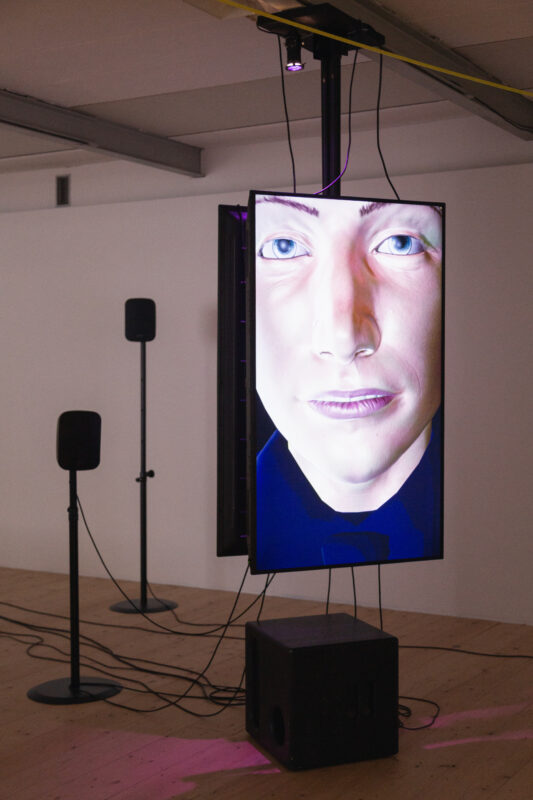




Installation, 2-channel video, 7-channel audio, 2020
This installation investigates border violence enacted through artificial intelligence. The work deconstructs iBorderCtrl, a controversial, EU-funded “lie detector” system designed to screen migrants by analyzing their facial micro-expressions.
In the original system, a migrant would be interrogated by a menacing digital avatar. Based on undisclosed criteria, the software would then decide if the person was being truthful. This technology is built on dubious methods; its algorithm was trained on just 32 hired actors performing “deception” in a lab, and its scientific basis stems from colonial and racially biased research that has been widely discredited.
The Irresistible Powers of Silent Talking turns this system on itself. In the installation, the police avatar is rendered voiceless while its own face is scanned for deceit. The algorithmic analysis is translated into an ambiguous, undetermined soundscape, mirroring the opaque and violent judgment of the real system.
Commissioned and Supported By: FACT Liverpool, EMARE/EMAP, Hertz Lab at ZKM | Center for Art and Media Karlsruhe, BALTIC Centre for Contemporary Art, The Creative Industries Fund NL, and Stroom Den Haag.